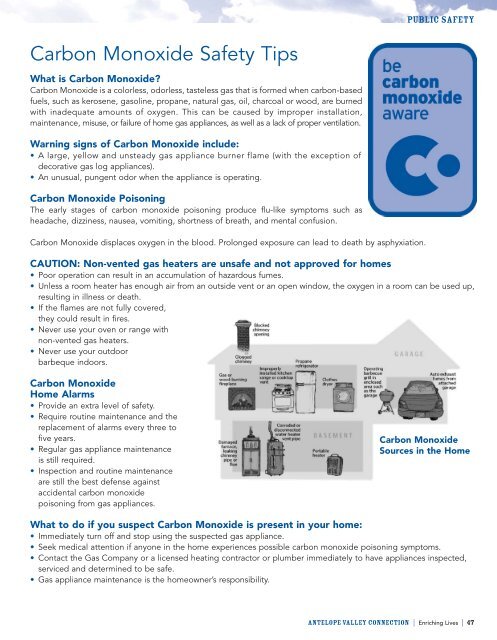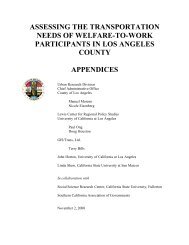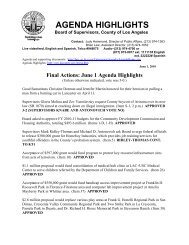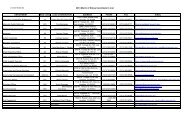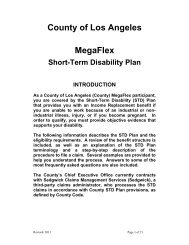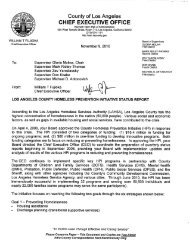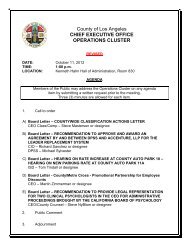Layout 1 (Page 1) - Chief Executive Office - Los Angeles County
Layout 1 (Page 1) - Chief Executive Office - Los Angeles County
Layout 1 (Page 1) - Chief Executive Office - Los Angeles County
You also want an ePaper? Increase the reach of your titles
YUMPU automatically turns print PDFs into web optimized ePapers that Google loves.
Carbon Monoxide Safety Tips<br />
What is Carbon Monoxide?<br />
Carbon Monoxide is a colorless, odorless, tasteless gas that is formed when carbon-based<br />
fuels, such as kerosene, gasoline, propane, natural gas, oil, charcoal or wood, are burned<br />
with inadequate amounts of oxygen. This can be caused by improper installation,<br />
maintenance, misuse, or failure of home gas appliances, as well as a lack of proper ventilation.<br />
Warning signs of Carbon Monoxide include:<br />
• A large, yellow and unsteady gas appliance burner flame (with the exception of<br />
decorative gas log appliances).<br />
• An unusual, pungent odor when the appliance is operating.<br />
Carbon Monoxide Poisoning<br />
The early stages of carbon monoxide poisoning produce flu-like symptoms such as<br />
headache, dizziness, nausea, vomiting, shortness of breath, and mental confusion.<br />
Carbon Monoxide displaces oxygen in the blood. Prolonged exposure can lead to death by asphyxiation.<br />
PUBLIC SAFETY<br />
CAUTION: Non-vented gas heaters are unsafe and not approved for homes<br />
• Poor operation can result in an accumulation of hazardous fumes.<br />
• Unless a room heater has enough air from an outside vent or an open window, the oxygen in a room can be used up,<br />
resulting in illness or death.<br />
• If the flames are not fully covered,<br />
they could result in fires.<br />
• Never use your oven or range with<br />
non-vented gas heaters.<br />
• Never use your outdoor<br />
barbeque indoors.<br />
Carbon Monoxide<br />
Home Alarms<br />
• Provide an extra level of safety.<br />
• Require routine maintenance and the<br />
replacement of alarms every three to<br />
five years.<br />
• Regular gas appliance maintenance<br />
is still required.<br />
• Inspection and routine maintenance<br />
are still the best defense against<br />
accidental carbon monoxide<br />
poisoning from gas appliances.<br />
Carbon Monoxide<br />
Sources in the Home<br />
What to do if you suspect Carbon Monoxide is present in your home:<br />
• Immediately turn off and stop using the suspected gas appliance.<br />
• Seek medical attention if anyone in the home experiences possible carbon monoxide poisoning symptoms.<br />
• Contact the Gas Company or a licensed heating contractor or plumber immediately to have appliances inspected,<br />
serviced and determined to be safe.<br />
• Gas appliance maintenance is the homeowner’s responsibility.<br />
ANTELOPE VALLEY CONNECTION | Enriching Lives | 47


